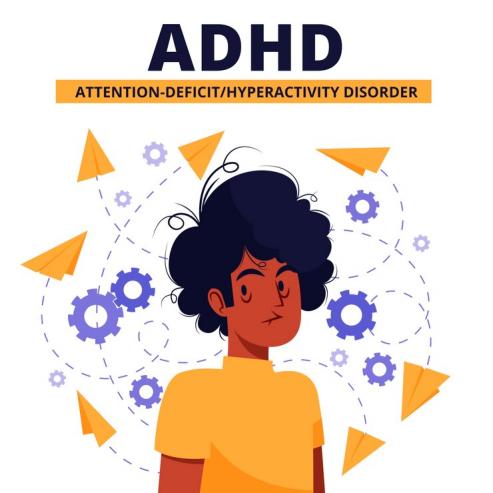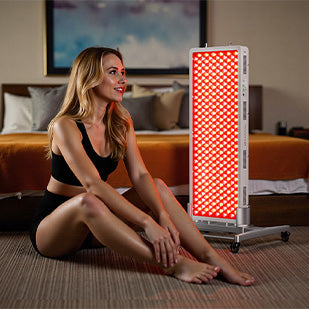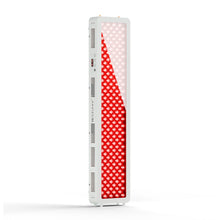Lacrosse is among the most taxing field sports to compete, as athletes force their bodies to the extreme with sudden sprints, direction changes, and sheer physical contact. With such explosive gameplay comes muscle fatigue and soreness, and good recovery strategies are key for optimizing performance.
Red light therapy (RLT) has become a powerful tool for athletes who want to speed up recovery, mitigate muscle fatigue, and enhance general endurance. But how does it work, and can it benefit lacrosse players? This article will discuss the science behind RLT and how it should be implemented in a lacrosse athlete recovery regime.

Understanding Lacrosse's Physical Demands and Injury Patterns
The Intensity of Modern Lacrosse Training and Competition
Lacrosse is a fast-paced, high-impact sport, with constant sprinting, rapid changes of direction, contact, and explosive actions. Frequent accelerations, decelerations, and powerful shots put a lot of stress on the muscles.
Most games take 60 minutes, broken into four quarters, with only a few seconds between plays for teams to regroup. Midfielders, in particular, cover vast distances, with high levels of endurance and strength required. Plays consist of matchups between attackers and defenders who engage in physical battles, resulting in muscle fatigue and possible injuries. With games and practices scheduled multiple times a week, recovery is key.
Common Acute Muscle Injuries in Lacrosse Players
Lacrosse is a high-intensity sport that leads to frequent muscle injuries among athletes[1]. The most common ones are the following:
- Hamstring strains – From sprinting and abrupt stops
- Fatigue of quadriceps and calf muscles — Probably due to output of constant high-power explosions
- Tightness in the lower back – From rotary motions and contact
- Soreness of the shoulder and arm – From shooting, passing, and body checking
Recovery exercises are crucial for muscle relaxation, muscle fatigue reduction, and injury prevention. This is where red light therapy steps in.
The Science Behind Red Light Therapy (RLT)
How RLT Works at the Cellular Level
Red light therapy (RLT) or photobiomodulation (PBM) — utilizes certain wavelengths of red and near-infrared (NIR) light that penetrate the skin to activate cellular mechanisms. Mitochondria—the powerhouse of the cell—absorb the light, and this promotes ATP (adenosine triphosphate) energy production within the body.
By producing more ATP, muscle cells can recover more quickly and they experience less fatigue. Moreover, RLT lowers oxidative stress and inflammation[2], which have both been identified as contributing to muscle soreness after an intense workout.

Wavelengths and Their Therapeutic Effects
Various wavelengths of red and near-infrared light penetrate the body to different depths, which affects how they behave around muscle tissues.
- Red light (630-660nm): Reaches skin and superficial muscles to promote wound healing and reduce inflammation.
- Near-infrared light (810-850nm): Penetrates deeper through muscle and joints, increasing circulation and relieving pain.
A blend of red and NIR light is ideal for lacrosse players seeking both immediate recovery and long-term muscle health.
Red Light Therapy's Impact on Athletic Performance
Muscle Recovery and Fatigue Reduction
For lacrosse athletes, post-game RLT can hasten recovery, enable harder training, and do it repeatedly. Research has indicated that RLT improves muscle recovery in the following ways:
- Boosting ATP Output — This allows the muscles to recover more quickly from high-exertion activities.
- Decreasing oxidative stress – Reduces muscle fatigue.
- Increasing blood flow – Sending more oxygen and nutrients into fatigued muscles.
- Boosting collagen synthesis – Supporting the regeneration of muscle tissue.
Managing Inflammation and Pain Response
Inflammation from intense exercise is natural — but too much inflammation can slow the recovery process. RLT can be a game-changer for athletes struggling with chronic pain or recurring muscle strains. RLT reduces inflammation through:
- Cytokine activity modulation – Decrease in pro-inflammatory markers such as TNF-α and IL-6.
- Enhancing lymphatic drainage — Removing metabolic residues in muscles.
- Reducing delayed-onset muscle soreness (DOMS) – Resulting in faster recovery between matches.
Targeting Specific Lacrosse Injuries with RLT
Treatment Protocols for Common Muscle Strains
By targeting elevated muscle with the right wavelengths, athletes can recover faster and lower their risk of additional injury. RLT can be used by lacrosse players for the treatment of acute muscle injuries in the following ways:
- Hamstring and quad strain: apply near-infrared light (810-850nm) for 15–30 minutes after a game.
- Calf soreness: Apply red light (660nm) to promote circulation and alleviate soreness.
- Tightness in the lower back: Near-infrared light penetrates deeper muscles to relieve tension.
- Shoulder pain: Red and NIR light work in concert to improve the repair and flexibility of tissue.
Prevention Strategies for Overuse Injuries
Lacrosse players are prone to overuse injuries as a result of their repetitive motions and grueling dans. RLT can be used in pre-game and post-game rituals as a way to:
- Enhance the range of motion and flexibility.
- Minimize tension in the neck, shoulders, and lower back.
- Improves circulation, preventing microtears and strain.
This allows players to elevate their performance throughout the season by utilizing RLT proactively.
Implementing RLT in Lacrosse Recovery Programs
Optimal Treatment Timing and Duration
Lacrosse athletes can use these RLT guidelines to ensure that they are getting the most benefit out of these programs:
- Pre-game: 10-20 minutes of red light therapy — to warm up the muscles and get better circulation.
- Postgame: 15-30 minutes of near-infrared light, for muscle recovery, reducing fatigue and inflammation.
- Injury recovery: 15-30-minute sessions every day for healing of the affected muscle.
Integration with Existing Recovery Protocols
Red light therapy is an adjunct to traditional recovery methods. Complete Lacrosse Recovery Routine consists of:
- Nutrition: Providing building blocks for muscle repair and growth.
- Foam rolling and stretching: Maintaining flexibility and preventing tightness.
- Cryotherapy: Dealing with acute inflammation post-intense matches.
- Sleep and rest: Giving the muscles time to recover completely.
RLT, when used in conjunction with these strategies or others, promotes the recovery necessary to keep players on their game.
Conclusion
Lacrosse is a physically demanding sport, and players are susceptible to muscle fatigue, soreness, and injury. Backed by science, RLT has emerged as a potentially powerful recovery tool to support muscle healing, potentially decrease inflammation, and boost overall performance. RLT can help lacrosse players recover faster, maximize time on the field, and stay in prime physical shape. It can be utilized for post-game recovery, injury prevention, or even rehabilitation because RLT gives a risk-free and effective way to aid athletes in staying at the top. With more studies emphasizing its advantages, introducing RLT into sports recovery programs can be a game-changer for lacrosse players at every level.
References
- Lincoln, Andrew E et al. “Rate of injury among youth lacrosse players.” Clinical Journal of Sport Medicine: Official Journal of the Canadian Academy of Sport Medicine vol. 24,4 (2014): 355-7. doi:10.1097/JSM.0000000000000011
- Foley, John, et al. “830 nm light-emitting diode (led) phototherapy significantly reduced return-to-play in injured university athletes: a pilot study.” Laser therapy vol. 25,1 (2016): 35-42. doi:10.5978/islsm.16-OR-03















 Small
Small

 Moderate
Moderate

 Moderate
Moderate

 Moderate
Moderate

 Full
Full



